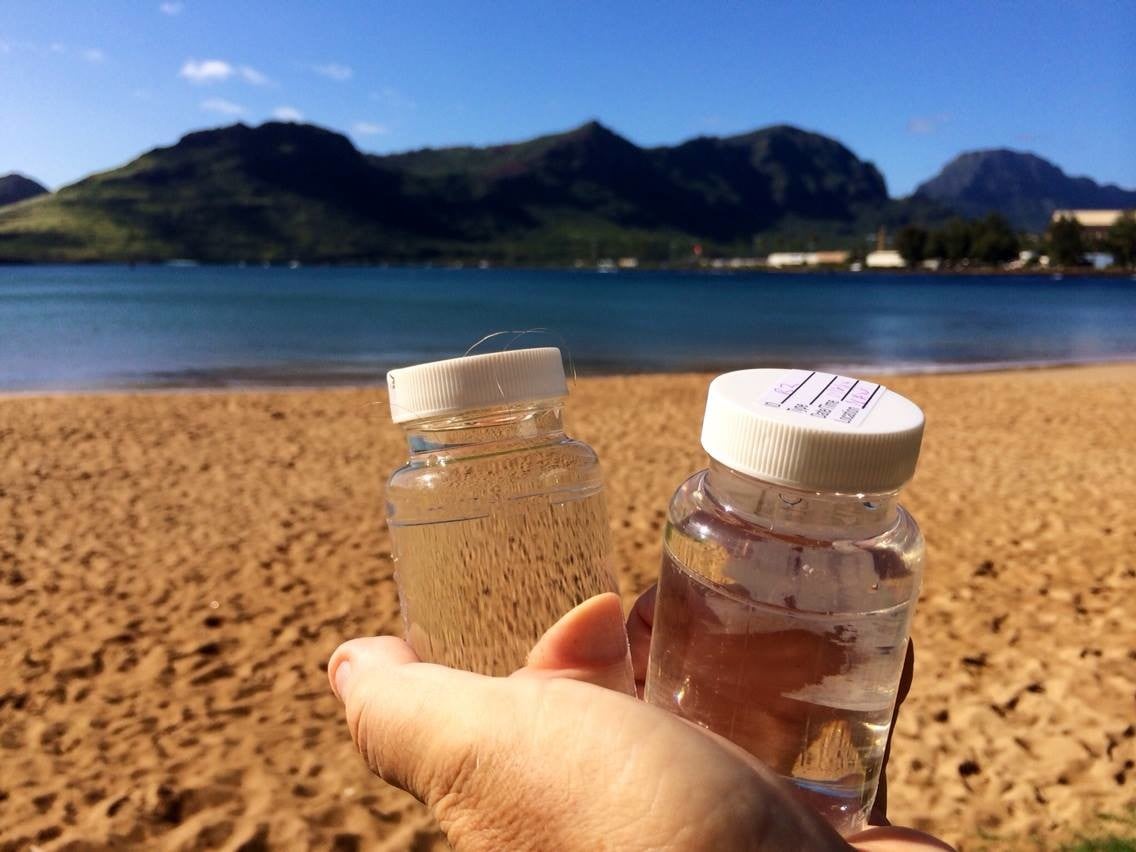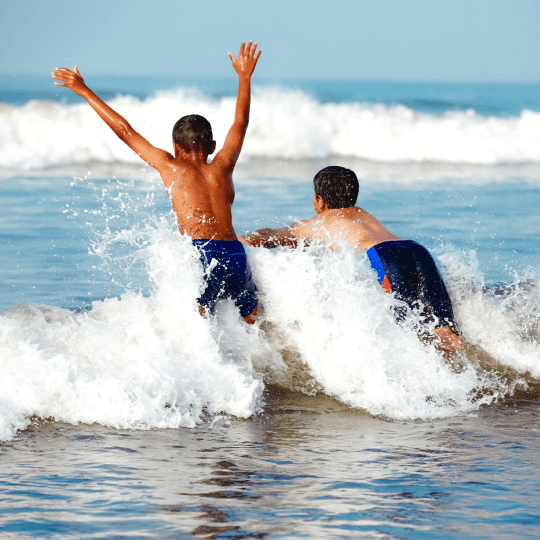
Blue Water Task Force
Everyone deserves access to clean water to surf, swim and play in.
Our Science-Based Approach
The Blue Water Task Force is Surfrider’s volunteer water quality monitoring program that provides critical water quality information to protect public health at the beach. Surfrider chapters use this program to raise awareness of local pollution problems and to bring together communities to implement solutions.
Blue Water Task Force (BWTF) labs measure fecal indicator bacteria levels in recreational waters and compare them to water quality standards set to protect public health. Chapter-run BWTF programs fill in the gaps and extend the coverage of agency-run beach monitoring programs by sampling ocean and bay beaches, estuaries and potential freshwater sources of pollution such as stormwater outlets, rivers and creeks that discharge onto the beach.

Featured Data
Kauaʻi Annual Water Quality Report
2024 BWTF results are consistent with water quality trends from previous years. Across Kauaʻi, sites located at stream mouths, beaches with freshwater outlets, or in bays without much circulation are typically characterized by higher bacteria levels than at ocean sites with better circulation and more mixing. Streams located at many of the most contaminated sites could also carry runoff from cesspools and other pollution sources in the watershed such as animal waste from pets, agriculture, and wildlife.

Featured Data
Kauaʻi study indicates human sewage in streams
The Kauaʻi BWTF tested 24 streams, four times each, for both enterococcus and sucralose, an artificial sweetener used to indicate the presence of human sewage in waterways. All streams tested yielded bacteria counts that exceed the state health criteria for fecal indicator bacteria, while sucralose was detected in 19 of 24 streams tested. Sucralose was detected in at least 50% of the samples collected in 14 streams, indicating that these streams are contaminated with human sewage.
View Your Local Water Quality
{{ locations.length }} sites tested
Water quality testing provided by Surfrider's {{info.name}} Chapter
Our Local Program
Ocean and nearshore waters around Kauaʻi are monitored on a regular basis by the Clean Water Branch of Hawaii’s Department of Health and by the Blue Water Task Force of the Kauaʻi Chapter of the Surfrider Foundation. Both organizations collect samples in similar ways and test for Enterococcus bacteria concentrations using the exact same method approved by the U.S. Environmental Protection Agency.
The DOH and Surfrider monitor different types of beaches and coastal recreational waters on Kauaʻi to provide more extensive water-quality information to inform safe beach going. DOH collects water samples at popular ocean beaches, while Surfrider collects at popular surfbreaks or in estuaries where canal, stream or river water meets the ocean at the beach. The latter sites are extremely popular places for children to play in the water but the water is often polluted.
While DOH chronic-water pollution warning signs have been posted at Gillin’s Beach (at Mahaulepu), Hanamaulu Beach Park and Niumalu Beach Park, many more signs are needed to inform the public about the health risk from swimming in polluted waters and to warn them to stay out.
Working together, Surfrider and the DOH must identify polluted waters and make sure that residents and visitors alike are aware of potential health threats at the beach. The DOH can then identify the sources of pollution and take action to eliminate them. We need to ensure that the health of anyone enjoying the beach or our coastal waters here on Kauaʻi is safe and protected.
Hawaiʻi Water Quality Information & Resources
To sign up to receive notifications when a DOH beach advisory, brown water advisory or sewage spill is posted, or any water quality advisory is closed, subscribe via the link below.
Surfrider sampling over the years has documented chronic levels of pollution at Hanamaulu stream, Nawiliwili stream at Kalapaki Bay, Niumalu Beach Park, and Waikomo stream at Koloa Landing. Waiopili Stream at Mahaulepu is 10 times more polluted with feces than the others above. We provide this data to the Hawaii Department of Health and the U.S. EPA, trying to get them to post warning signs at these spots and then take measures to stop the polluting.
If you would like to find out more, contact Dr. Carl J. Berg, Senior Scientist, Kauai Chapter: (808) 639-2968 or cberg@pixi.com
Local Water Quality Resources

